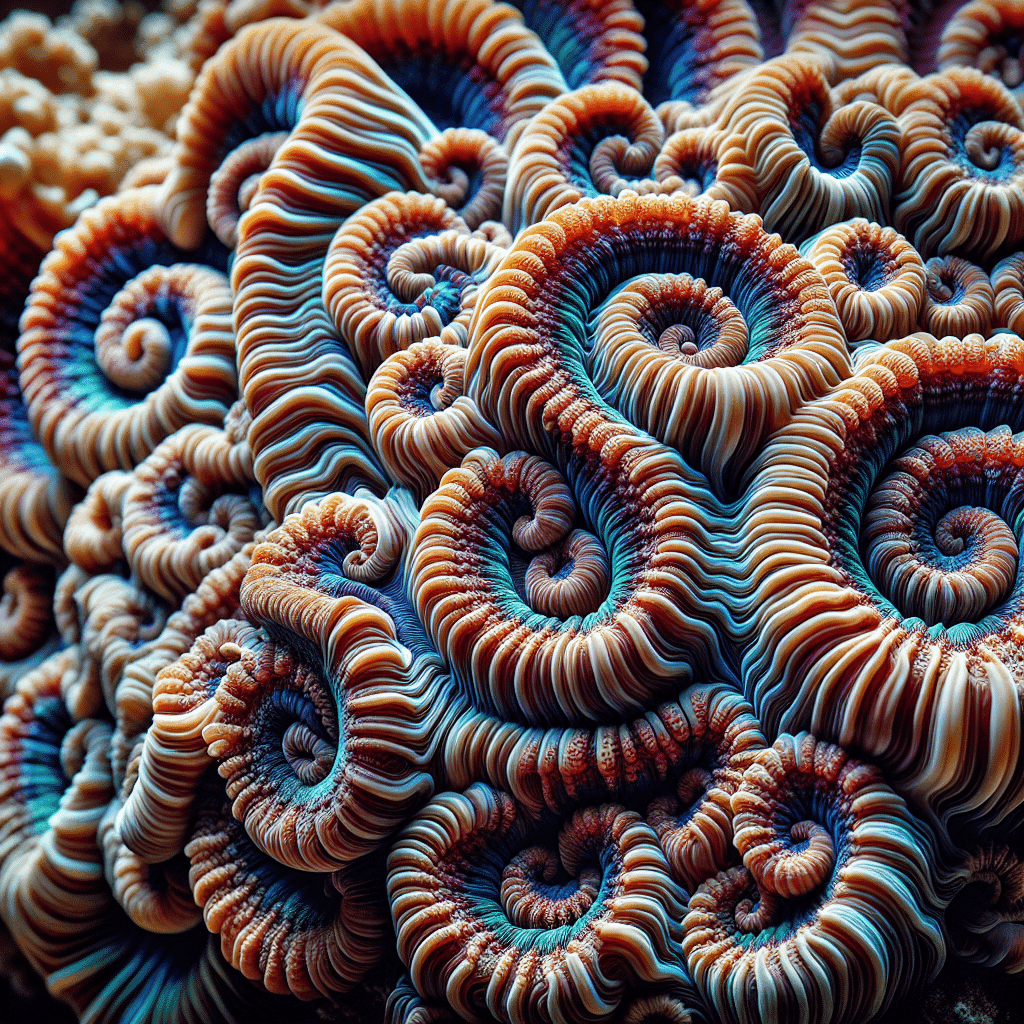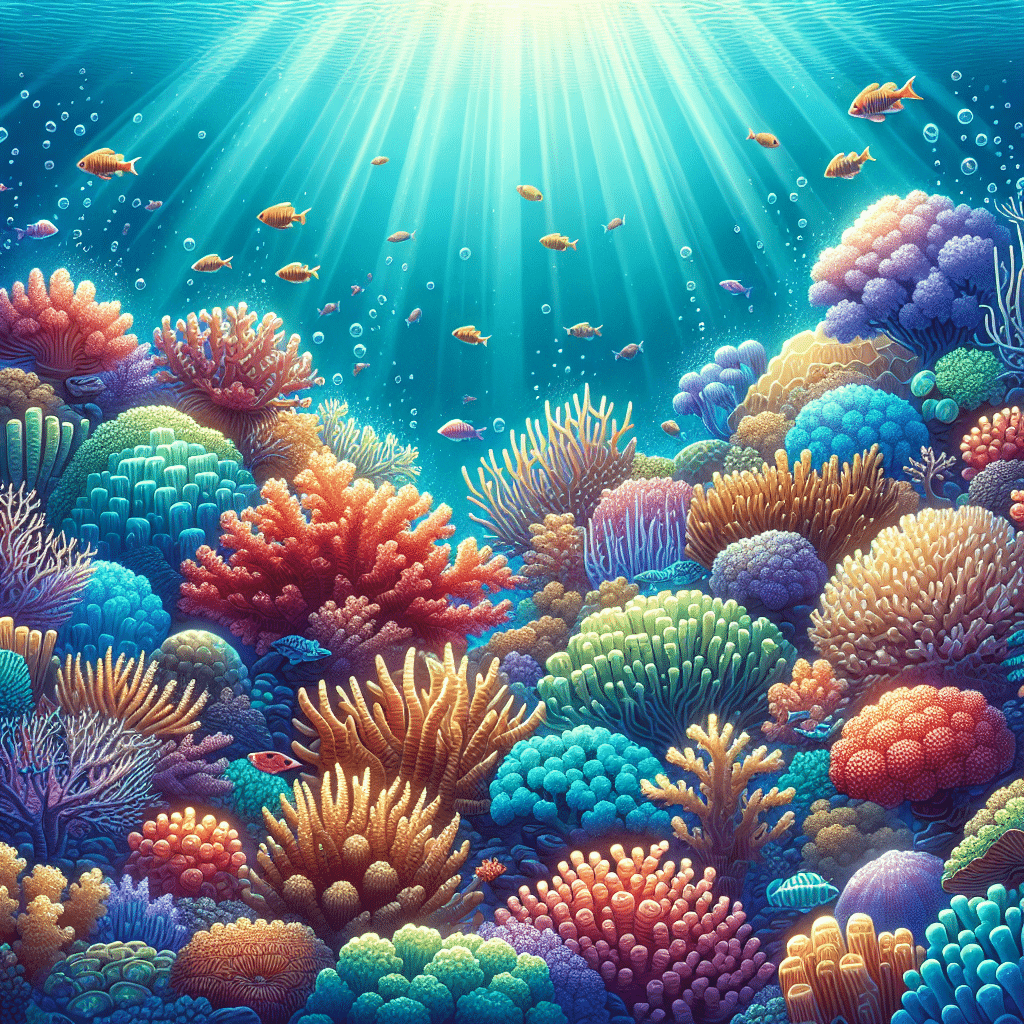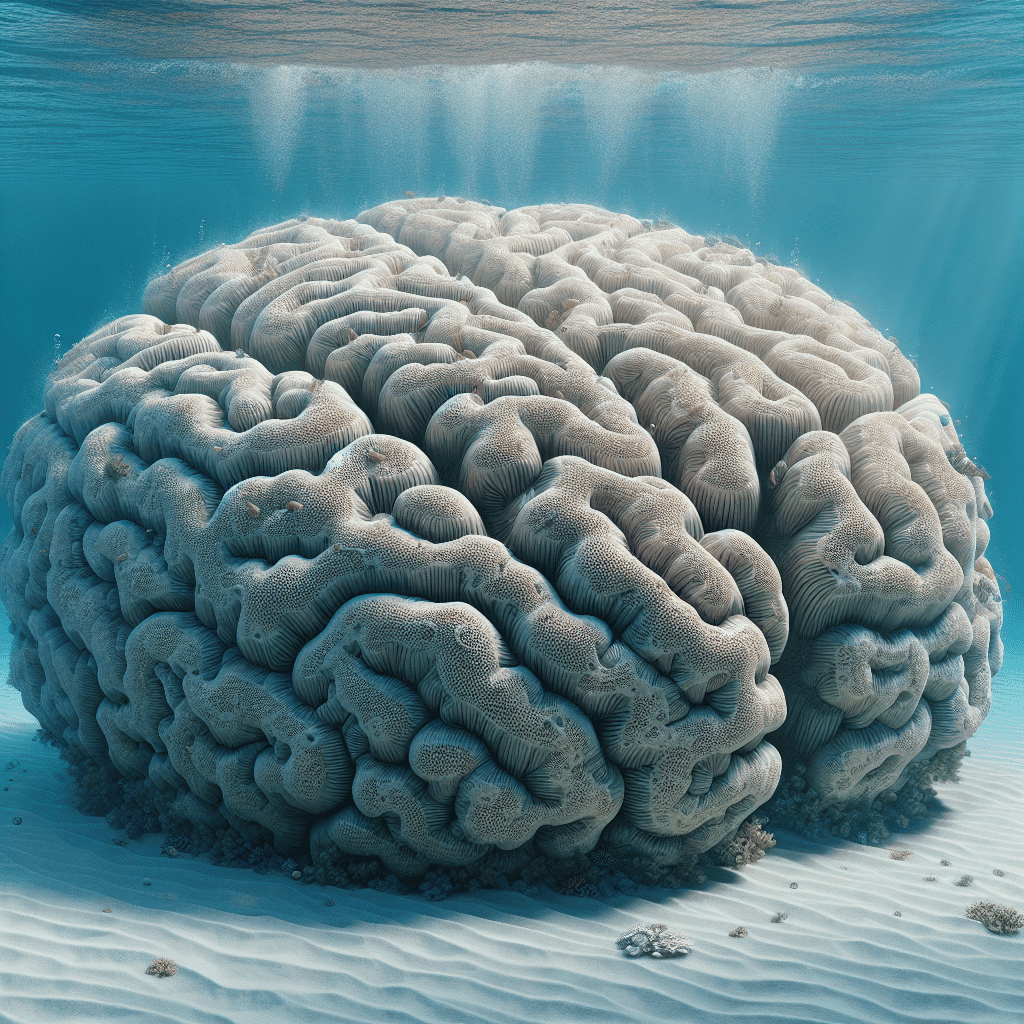Exploring Corals in Reef Tanks
Introduction to Corals
Corals are fascinating marine organisms that play a crucial role in the health and diversity of reef ecosystems. They are often mistaken for plants, but they are actually animals that belong to the phylum Cnidaria. As a reef tank hobbyist, I’ve come to appreciate the unique characteristics and beauty that corals bring to an aquarium setup. There are two main types of corals: soft corals and hard corals.
Soft corals, like xenia and leather coral, are flexible and soft, resembling plants with their flowing movements. On the other hand, hard corals, such as brain coral and staghorn coral, have stony skeletons and contribute to reef-building. Understanding the differences between these types helps me choose the right corals for my tank.
Importance of Corals in Reef Tanks
Corals serve vital functions in reef tanks, providing habitat, food, and contributing to the overall health of the aquarium environment. They create complex structures that offer shelter and breeding grounds for various marine species. This biodiversity is essential for maintaining a balanced ecosystem.
Additionally, corals engage in a symbiotic relationship with zooxanthellae, a type of algae that lives within their tissues. This relationship allows corals to obtain energy through photosynthesis while providing the algae with protection and access to sunlight. The presence of corals enhances the aesthetic appeal of my reef tank, making it a vibrant and lively habitat.
To maintain a thriving reef tank, it’s important to understand the requirements for coral care, such as lighting, water quality, and feeding. This knowledge enables me to create an environment where corals can flourish.
Here’s a quick overview of some important coral types I often consider for my reef tank:
| Coral Type | Characteristics |
|---|---|
| Soft Corals | Flexible, non-reef builders |
| Hard Corals | Stony skeletons, reef builders |
| Mushroom Coral | Colorful, easy to care for |
| Torch Coral | Flowing tentacles, beautiful colors |
| Acropora | Fast-growing, requires strong light |
Understanding the role of corals in reef tanks not only helps in selecting the right species but also ensures a healthy and vibrant aquarium environment.
Types of Corals
Corals play a vital role in reef tanks, and understanding the different types is essential for any hobbyist. I’ll go over the two main categories: soft corals and hard corals.
Soft Corals
Soft corals, such as sea fingers and sea whips, are flexible and soft, resembling plants or trees. Unlike hard corals, they do not have stony skeletons; instead, they grow wood-like cores and fleshy rinds for protection. They typically live in colonies, creating beautiful, flowing displays in a reef tank.
| Characteristic | Description |
|---|---|
| Structure | Flexible, non-stony skeleton |
| Growth | Colony-forming |
| Examples | Xenia, Kenya tree coral, Mushroom coral |
Soft corals thrive in various conditions, making them ideal for beginners. They often require lower light levels and can adapt to fluctuations in water parameters.
Hard Corals
Hard corals, also known as stony corals, have a rigid calcium carbonate skeleton that contributes to reef building. These corals are essential for creating the structure of coral reefs and provide habitats for numerous marine species. Many hard corals are broadcast spawners, releasing large quantities of eggs and sperm into the water during synchronized spawning events. After fertilization, the larvae are attracted to light and swim to the surface before being carried by ocean currents until they find a suitable reef to settle on (Coral.org).
| Characteristic | Description |
|---|---|
| Structure | Rigid, calcium carbonate skeleton |
| Growth | Reef-building, colony-forming |
| Examples | Brain coral, Acropora, Staghorn coral |
Hard corals typically require more stable water conditions and higher light levels, making them a bit more challenging to care for but rewarding with their vibrant colors and intricate structures.
By understanding the differences between soft and hard corals, I can make informed decisions when adding them to my corals collection. Each type has its unique care requirements and beauty, enriching the overall reef tank experience.
Scroll Coral Overview
Characteristics of Scroll Coral
Scroll coral is a fascinating species that adds a unique touch to any reef tank. These corals are known for their distinct spiral or scroll-like formations, which can create a stunning visual effect in aquariums. Unlike soft corals, scroll corals are classified as hard corals and possess a stony skeleton, providing structure and support. They are somewhat slow-growing compared to other stony corals but can thrive with proper care and maintenance (Tidal Gardens).
In terms of reproduction, scroll corals can be fragmented for propagation, which is a great way to expand your collection without needing to buy new specimens. Despite their slow growth rate, their unique appearance can make them a focal point in your reef tank.
Habitat Requirements
When considering scroll coral for your aquarium, it’s essential to replicate their natural habitat as closely as possible. These corals thrive in very salty water, requiring a salinity range of 32 to 42 parts per thousand. This specificity means they are often found in coastal and open ocean areas (NOAA).
For lighting, scroll corals prefer medium light conditions, although some individuals may show better growth under higher light levels (Tidal Gardens). It’s important to monitor your tank’s light intensity to ensure your scroll coral receives the right amount.
Here’s a quick reference table for scroll coral habitat requirements:
| Requirement | Details |
|---|---|
| Salinity | 32-42 parts per thousand |
| Light Requirement | Medium to high light |
| Growth Rate | Slow |
| Propagation | Fragmentation possible |
By understanding these characteristics and habitat needs, I can provide the best environment for my scroll coral, ensuring it thrives in my reef tank. For more information on caring for various corals, check out our guides on brain coral and duncan coral.
Scroll Coral Care Guide
Taking care of scroll coral can be a rewarding experience for reef tank hobbyists. Here are some essential aspects to consider for optimal growth and health.
Lighting and Placement
Scroll corals thrive best under medium to high light conditions. However, since they come from different areas of the reef, their specific lighting needs can vary. It’s essential to monitor their response to light and adjust accordingly. Here’s a quick reference table for light requirements:
| Coral Type | Light Requirement |
|---|---|
| Scroll Coral | Medium to High |
For placement, ensure that scroll corals are firmly attached to the aquascape. Their shape can make them susceptible to strong currents, so it’s crucial to avoid placing them in areas with excessive flow. For more on various coral types, check out brain coral or torch coral.
Water Quality and Flow
Scroll corals require very salty water to survive, ideally between 32 to 42 parts per thousand. This salinity is crucial for their overall health and is typical of coastal and open ocean areas (NOAA).
In terms of water flow, scroll corals prefer moderate water movement. Too much flow can dislodge them from their placement, while too little can hinder their growth. Regular water quality testing is vital to ensure parameters such as pH, nitrate, and phosphate levels are within acceptable ranges.
| Parameter | Ideal Range |
|---|---|
| Salinity | 32 – 42 ppt |
| pH | 8.1 – 8.4 |
| Nitrate | < 10 ppm |
| Phosphate | < 0.03 ppm |
Feeding Scroll Corals
Feeding scroll corals can significantly enhance their growth and health. While they primarily rely on photosynthesis, providing supplemental feeding can be beneficial, especially in a home aquarium where light conditions may not always be optimal.
I typically feed my scroll coral with a fine particulate food designed for reef corals, as well as occasional zooplankton. Here are some feeding tips:
- Feed in the evening when the coral is most active.
- Use a turkey baster to target feed the coral.
- Offer a balanced diet that includes both phytoplankton and zooplankton.
For more information on other coral feeding strategies, consider exploring articles on different coral types like mushroom coral or duncan coral.
By ensuring proper lighting, water quality, and feeding practices, my scroll corals can thrive and contribute to the vibrant ecosystem of my reef tank.
Diseases and Health Issues
Keeping scroll coral healthy in my reef tank comes with its own set of challenges, especially when it comes to diseases and health issues. It’s crucial to stay informed about common coral diseases and how to prevent them.
Common Coral Diseases
Corals can suffer from various diseases that may affect their health and growth. Here are some of the more common diseases I keep an eye out for:
| Coral Disease | Description |
|---|---|
| Coral Bleaching | Caused by stress factors (like temperature changes), where the coral expels its zooxanthellae, leading to a loss of color. |
| Brown Jelly Disease | A bacterial infection that manifests as a brown, slimy substance on the coral, often leading to tissue loss. |
| White Band Disease | A disease that causes white bands of tissue loss, often affecting species like Acropora. |
| Black Band Disease | Characterized by a black band of microbial growth, leading to rapid tissue loss on corals. |
Knowing the signs of these diseases can help me act quickly to treat affected corals.
Preventative Measures
Prevention is key to keeping my scroll coral and other corals in good health. Here are some measures I take:
- Maintain Water Quality: Regularly testing and maintaining the appropriate levels of ammonia, nitrite, nitrate, pH, and salinity in the tank is crucial.
- Limit Stress: Avoid sudden changes in water temperature and salinity, which can stress corals and make them more susceptible to disease.
- Proper Feeding: Ensuring that my corals receive adequate nutrition helps boost their immune systems. I make sure to feed them appropriate coral foods regularly.
- Routine Maintenance: Performing regular tank maintenance, including water changes and cleaning, helps reduce the buildup of harmful substances and promotes a healthy environment.
- Quarantine New Additions: Before introducing new corals to my tank, I quarantine them for a few weeks to prevent introducing diseases.
By keeping these common diseases and preventative measures in mind, I can help ensure that my scroll coral and other corals thrive in my reef tank. For more information on coral care, check out my articles on brain coral and mushroom coral.
Coral Conservation
Threats to Coral Reefs
Coral reefs face numerous threats that can severely impact their health and sustainability. Understanding these threats is crucial for anyone passionate about maintaining healthy reef ecosystems.
Pollution: Land-based runoff and pollutants from activities like dredging, coastal development, and agriculture can lead to increased nutrient levels in the water. This promotes algae growth, which can smother corals (NOAA).
Overfishing: The overharvesting of fish and other marine species can disrupt the balance of reef ecosystems. Destructive fishing practices, such as blast fishing and cyanide fishing, further damage coral structures.
Climate Change: Warming ocean temperatures can lead to coral bleaching, a phenomenon where corals lose their vibrant colors and symbiotic algae, resulting in weakened corals that may die if stress persists.
Collecting Live Corals: The collection of live corals for the aquarium market contributes to the decline of coral reefs. This practice, combined with destructive fishing techniques, further exacerbates the situation (NOAA).
Oil Spills: Petroleum spills can disrupt coral reproduction, damaging eggs and sperm during spawning events, making corals more vulnerable to other disturbances.
Here’s a table summarizing these threats:
| Threats to Coral Reefs | Description |
|---|---|
| Pollution | Nutrient runoff causing algae growth that smothers corals |
| Overfishing | Disruption of reef ecosystems and damage from destructive fishing practices |
| Climate Change | Warming waters causing coral bleaching |
| Collecting Live Corals | Decline of coral populations due to harvesting for aquariums |
| Oil Spills | Damage to coral reproductive success during spawning |
Conservation Efforts
Efforts to conserve coral reefs are crucial for ensuring the survival of these vibrant ecosystems. Here are some of the key initiatives being undertaken:
Marine Protected Areas (MPAs): Establishing MPAs helps to safeguard critical habitats from human activities, allowing ecosystems to recover and thrive.
Sustainable Fishing Practices: Promoting responsible fishing techniques can help preserve reef health. By minimizing destructive practices, we can protect coral structures and maintain biodiversity.
Coral Restoration Projects: These initiatives involve cultivating corals in nurseries and transplanting them onto damaged reefs, helping to restore coral populations and improve reef resilience.
Education and Awareness: Raising awareness about the importance of coral reefs and the threats they face is essential. Educating the public and policymakers can lead to better protection measures.
Reducing Pollution: Implementing better waste management practices and enforcing regulations to limit runoff and pollution can significantly improve water quality and reef health.
For reef tank enthusiasts like me, every bit of effort counts. By advocating for these conservation methods and making informed choices, we can play a part in protecting coral reefs. Explore more about different types of corals and how we can support their health and sustainability in our aquariums.
Coral Reproduction
Coral Spawning Events
Coral reproduction is quite fascinating, especially when it comes to spawning events. Many hard corals are broadcast spawners, which means they release large quantities of eggs and sperm into the water simultaneously. This usually happens during specific times of the year, often linked to lunar cycles.
During these synchronized spawning events, the eggs and sperm combine to form coral larvae. I find it remarkable how these larvae are attracted to light and swim to the surface of the water. They can drift along with ocean currents for days or even weeks until they eventually find a suitable reef to settle on. It’s a kind of aquatic journey that is vital for the growth and sustainability of coral colonies.
Once the larvae settle, they develop into polyps, which are the basic building blocks of coral. Over time, these polyps multiply and form larger coral colonies. For more details, you can check out this helpful resource on corals.
Coral Larvae Development
After coral larvae settle onto a reef, they undergo a fascinating transformation. Initially, they attach themselves to the substrate, and from there, they develop into polyps. This stage is crucial, as the health and conditions of their environment can significantly influence their growth.
Once the larvae become polyps, they begin to multiply asexually, creating new polyps that form the coral colony. This process of asexual reproduction allows corals to expand rapidly, which is essential for building the reef structure.
One interesting fact is that sea turtles play a role in this process. After consuming coral polyps, sea turtles pass the undigested larvae in their feces, helping disperse them to new areas. This not only aids in the colonization of new reefs but also enhances the genetic diversity of coral populations (Coral.org).
Keeping an eye on the conditions in my reef tank can help ensure that my coral thrives as it goes through these stages of reproduction. If you’re interested in other types of corals, feel free to explore the fascinating world of brain coral, mushroom coral, or even acropora.
Corals and Sea Turtles
Impact of Sea Turtles on Coral Reefs
Sea turtles are not just beautiful creatures; they play a vital role in the health of coral reefs. One of their main contributions is controlling algae growth. As sea turtles feed on seagrass, they also munch on small pieces of algae that may settle on coral surfaces. This helps ensure that corals receive enough light for photosynthesis, which is crucial for their growth and survival (Coral.org).
Additionally, sea turtles act as essential nutrient cyclers between coral reefs and seagrass beds. When they digest plant matter, they excrete nutrient-rich waste near coral reefs. This waste provides vital nutrients like nitrogen and phosphorus, which are crucial for the growth and development of coral polyps (Coral.org).
Symbiotic Relationship
The relationship between sea turtles and corals is quite symbiotic. Not only do sea turtles help sustain coral health, but they also aid in coral reproduction. When sea turtles consume coral polyps, they sometimes pass undigested coral larvae in their feces. This process helps disperse the larvae, allowing corals to colonize new areas and contributing to the genetic diversity of coral reefs (Coral.org).
Moreover, hawksbill turtles specifically help maintain the balance of reef ecosystems by preventing excessive sponge growth. By eating certain sponge species, they stop sponges from outcompeting corals for space and resources, ensuring a more diverse marine environment (Coral.org).
Understanding this dynamic connection between sea turtles and coral reefs can enhance our appreciation for these ecosystems. As I continue to explore the world of corals, it’s fascinating to see how interconnected life in the ocean truly is.



